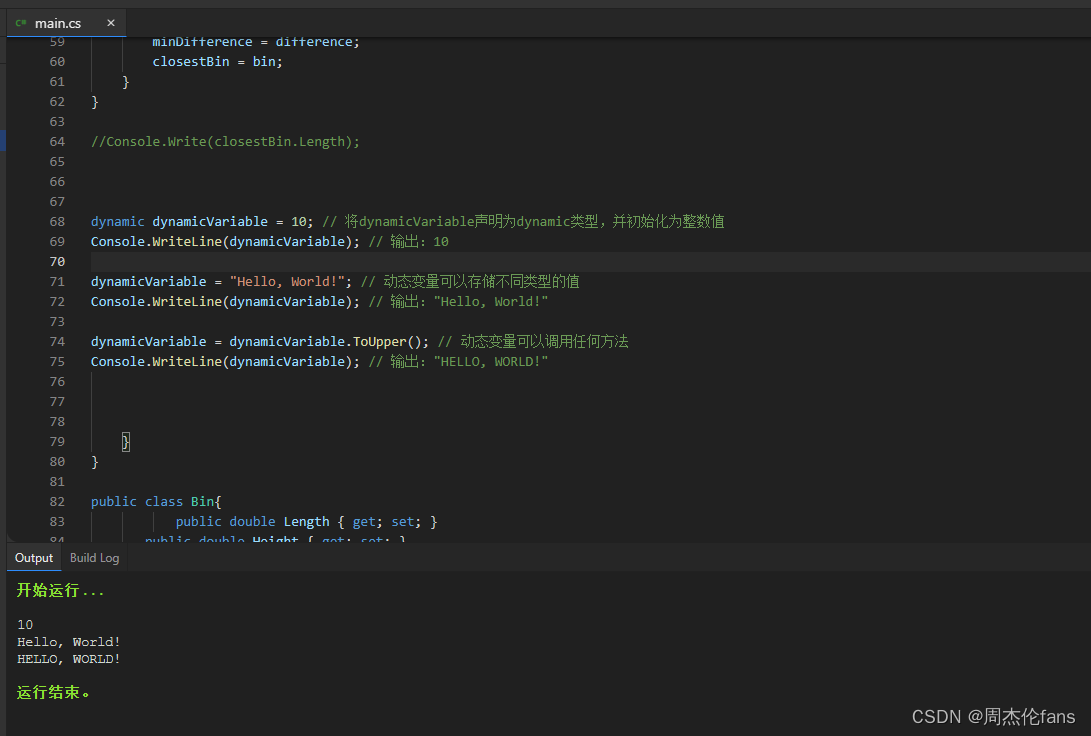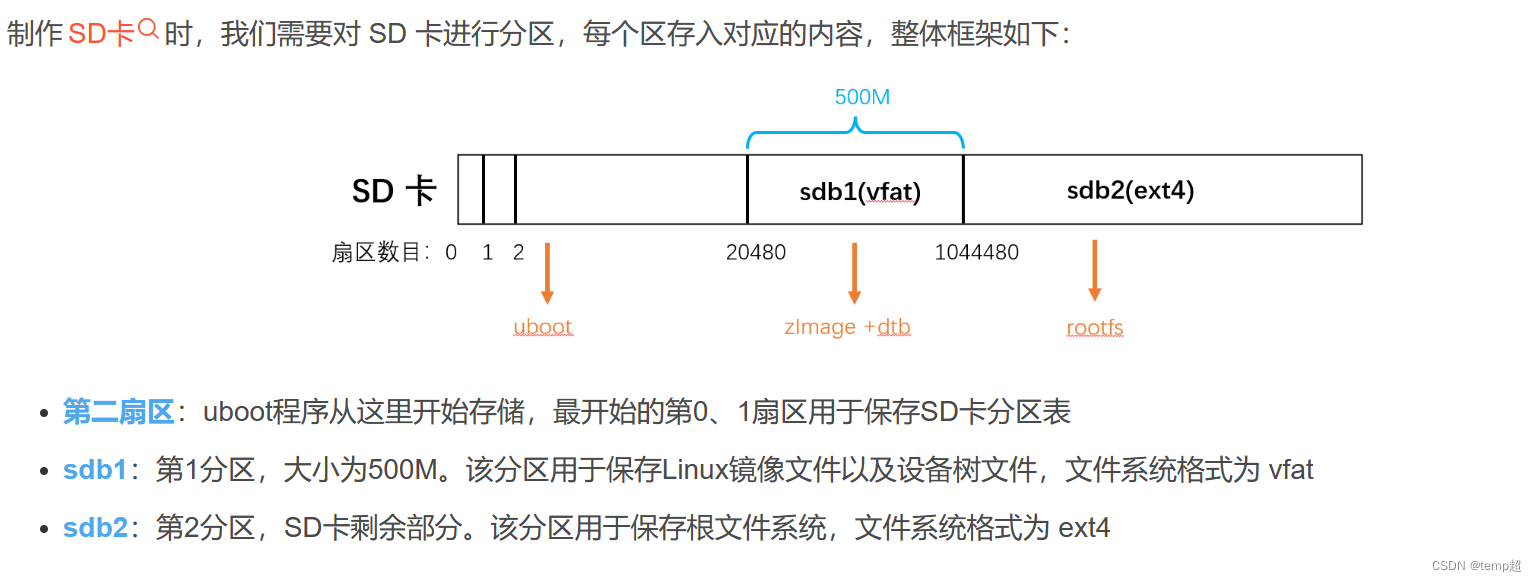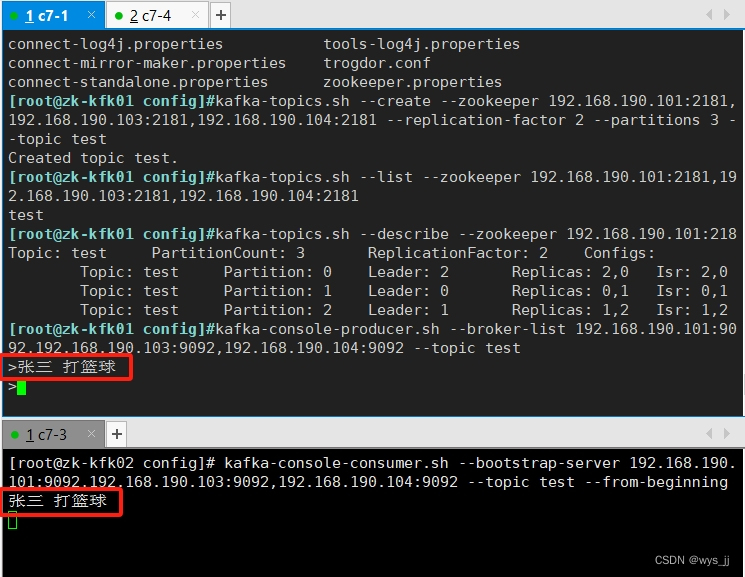本文涉及知识点
动态规划 区间dp 位运算
LeetCode100259. 划分数组得到最小的值之和
给你两个数组 nums 和 andValues,长度分别为 n 和 m。
数组的 值 等于该数组的 最后一个 元素。
你需要将 nums 划分为 m 个 不相交的连续 子数组,对于第 ith 个子数组 [li, ri],子数组元素的按位AND运算结果等于 andValues[i],换句话说,对所有的 1 <= i <= m,nums[li] & nums[li + 1] & … & nums[ri] == andValues[i] ,其中 & 表示按位AND运算符。
返回将 nums 划分为 m 个子数组所能得到的可能的 最小 子数组 值 之和。如果无法完成这样的划分,则返回 -1 。
示例 1:
输入: nums = [1,4,3,3,2], andValues = [0,3,3,2]
输出: 12
解释:
唯一可能的划分方法为:
[1,4] 因为 1 & 4 == 0
[3] 因为单元素子数组的按位 AND 结果就是该元素本身
[3] 因为单元素子数组的按位 AND 结果就是该元素本身
[2] 因为单元素子数组的按位 AND 结果就是该元素本身
这些子数组的值之和为 4 + 3 + 3 + 2 = 12
示例 2:
输入: nums = [2,3,5,7,7,7,5], andValues = [0,7,5]
输出: 17
解释:
划分 nums 的三种方式为:
[[2,3,5],[7,7,7],[5]] 其中子数组的值之和为 5 + 7 + 5 = 17
[[2,3,5,7],[7,7],[5]] 其中子数组的值之和为 7 + 7 + 5 = 19
[[2,3,5,7,7],[7],[5]] 其中子数组的值之和为 7 + 7 + 5 = 19
子数组值之和的最小可能值为 17
示例 3:
输入: nums = [1,2,3,4], andValues = [2]
输出: -1
解释:
整个数组 nums 的按位 AND 结果为 0。由于无法将 nums 划分为单个子数组使得元素的按位 AND 结果为 2,因此返回 -1。
提示:
1 <= n == nums.length <= 104
1 <= m == andValues.length <= min(n, 10)
1 <= nums[i] < 105
0 <= andValues[j] < 105
动态规划的位运算
f(i,j) =
&
=
x
:
i
j
\Large\And=_{x:i}^j
&=x:ij
vNext[cur] 记录符合以下条件之一的next:
一,next-1 < cur。
二,f(i,next)
≠
\neq
= f(i,next-1)。
iBitCnt = log(max(nums[i])
≈
\approx
≈ 22 ,显然next的数量不会超过iBitCnt。
如果f(i,j)发生变化,至少一个二进制1变成0。
动态规划
动态规划的状态表示
dp[len][cur] 表示将nums[0…cur]划分为len个区间的最小和。
空间复杂度:O(nm)
动态规划的转移方程
r个区间向r+1个区间转移时:
如果f(cur,next) 等于 andValues[r-1]则:
MinSelf(dp[r+1][x],dp[r][cur-1]+nums[x]) x
∈
[
n
e
x
t
,
n
e
x
t
的下一个值
)
这样值设置的时间复杂度是:
\in[next,next的下一个值) 这样值设置的时间复杂度是:
∈[next,next的下一个值)这样值设置的时间复杂度是:
O
(
m
×
n
×
i
B
i
t
C
n
t
×
n
)
O(m \times n \times iBitCnt \times n )
O(m×n×iBitCnt×n) ,超时了。
只更新:x = next,其它的用二种方式更新:
如果 (nums[cur]& andValues[r-1]) = andValues[r-1]
则MinSelf(dp[r][cur],dp[r][cur-1])
时间复杂度:$
O
(
m
×
n
×
i
B
i
t
C
n
t
)
O(m \times n \times iBitCnt )
O(m×n×iBitCnt)
动态规划的初始值
枚举第一个区间
动态规范的返回值
dp.back().back()
动态规划的填表顺序
len 从1到m_r-1。
cur从1到m_c-1
代码
核心代码
template<class ELE,class ELE2>
void MinSelf(ELE* seft, const ELE2& other)
{
*seft = min(*seft,(ELE) other);
}
template<class ELE>
void MaxSelf(ELE* seft, const ELE& other)
{
*seft = max(*seft, other);
}
class Solution {
public:
int minimumValueSum(vector<int>& nums, vector<int>& andValues) {
const int iBitCnt = 22;
m_r = andValues.size();
m_c = nums.size();
const int iMax = (1 << iBitCnt) - 1;
vector<vector<int>> dp(m_r+1,vector<int>(m_c, m_iNotMay));
int iAnd = iMax;
for (int i = 0; i < m_c; i++) {
iAnd &= nums[i];
if (iAnd == andValues[0]) {
dp[1][i] = nums[i];
}
}
vector<set<int>> vNext(m_c);
{
vector<int> next(iBitCnt, m_c);
for (int i = nums.size() - 1; i >= 0; i--) {
vNext[i] = set<int>(next.begin(), next.end());
vNext[i].emplace(i);
vNext[i].erase(m_c);
for (int bit = 0; bit < iBitCnt; bit++)
{
bool b = (1 << bit) & nums[i];
if (!b) {
next[bit] = i;
}
}
}
}
for (int r = 1; r < m_r; r++)
{
for (int cur = 1; cur < m_c; cur++)
{
int iAdd = iMax;
for (const auto& next : vNext[cur]) {
iAdd &= nums[next];
if (andValues[r] == iAdd) {
MinSelf(&dp[r + 1][next], dp[r][cur - 1] + nums[next]);
}
}
if ((andValues[r - 1] & nums[cur]) == andValues[r - 1]) {
MinSelf(&dp[r][cur], dp[r][cur - 1]+nums[cur]-nums[cur-1]);
}
}
}
{
int r = m_r;
for (int cur = 1; cur < m_c; cur++)
{
if ((andValues[r - 1] & nums[cur]) == andValues[r - 1]) {
MinSelf(&dp[r][cur], dp[r][cur - 1] + nums[cur] - nums[cur - 1]);
}
}
}
const int iRet = dp.back().back();
return (iRet >= 1'000'000) ? -1 : iRet;
}
int m_r,m_c;
const int m_iNotMay = 1'000'000'000;
};
测试用例
template<class T>
void Assert(const T& t1, const T& t2)
{
assert(t1 == t2);
}
template<class T>
void Assert(const vector<T>& v1, const vector<T>& v2)
{
if (v1.size() != v2.size())
{
assert(false);
return;
}
for (int i = 0; i < v1.size(); i++)
{
Assert(v1[i], v2[i]);
}
}
int main()
{
vector<int> nums, andValues;
int k;
{
Solution sln;
nums = { 1, 9, 8, 8 }, andValues = { 1,8 };
auto res = sln.minimumValueSum(nums, andValues);
Assert(9, res);
}
{
Solution sln;
nums = { 1, 3, 2, 4, 7, 5, 3 }, andValues = { 0, 5, 3 };
auto res = sln.minimumValueSum(nums, andValues);
Assert(12, res);
}
{
Solution sln;
nums = { 1, 4, 3, 3, 2 }, andValues = { 0, 3, 3, 2 };
auto res = sln.minimumValueSum(nums, andValues);
Assert(12, res);
}
//vector<int> nums = { 3,6,9 };
//int k;
//
//{
// Solution sln;
// nums = { 3,6,9 }, k = 3;
// auto res = sln.findKthSmallest(nums, k);
// Assert(9LL, res);
//}
}

扩展阅读
视频课程
有效学习:明确的目标 及时的反馈 拉伸区(难度合适),可以先学简单的课程,请移步CSDN学院,听白银讲师(也就是鄙人)的讲解。
https://edu.csdn.net/course/detail/38771
如何你想快速形成战斗了,为老板分忧,请学习C#入职培训、C++入职培训等课程
https://edu.csdn.net/lecturer/6176
相关下载
想高屋建瓴的学习算法,请下载《喜缺全书算法册》doc版
https://download.csdn.net/download/he_zhidan/88348653
| 我想对大家说的话 |
|---|
| 闻缺陷则喜是一个美好的愿望,早发现问题,早修改问题,给老板节约钱。 |
| 子墨子言之:事无终始,无务多业。也就是我们常说的专业的人做专业的事。 |
| 如果程序是一条龙,那算法就是他的是睛 |
测试环境
操作系统:win7 开发环境: VS2019 C++17
或者 操作系统:win10 开发环境: VS2022 C++17
如无特殊说明,本算法用**C++**实现。




















